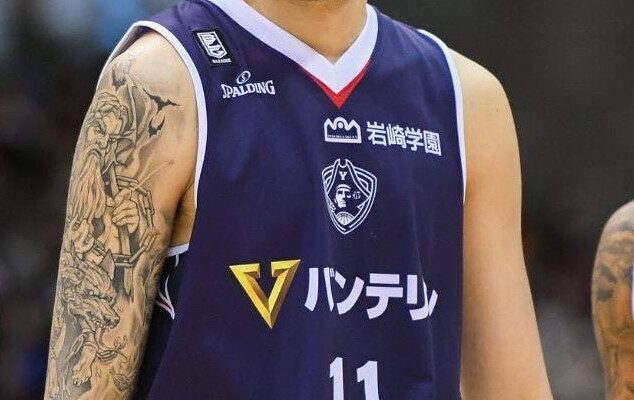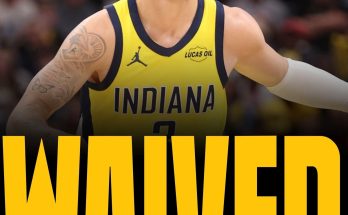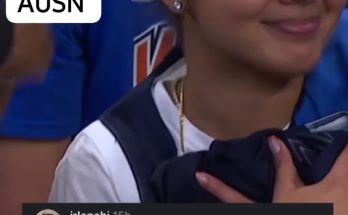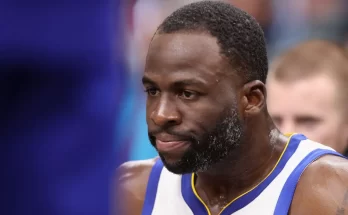From Manila to the Bay: Warriors Select Kai Sotto, a Filipino Big Man, 61st Overall
In a move that resonated far beyond the Chase Center and into the hearts of millions halfway across the world, the Golden State Warriors selected Kai Sotto with the 61st overall pick in the 2025 NBA Draft — a pick that, despite being near the end of the board, may have historic implications. For Sotto, it’s the culmination of a dream nurtured on the courts of Manila and pursued relentlessly across three continents. For the Warriors, it’s a low-risk, high-upside bet on untapped potential — a 7-foot-3 Filipino big man with soft hands, high basketball IQ, and an entire nation behind him.
But beyond the highlight reels and viral reactions, this selection is a symbolic bridge — linking the future of a franchise in transition to the global heartbeat of basketball’s expanding reach. It’s a bold wager on something deeper than draft projections or combine measurements. It’s a wager on promise, passion, and the power of the improbable.
Kai Zachary Perlado Sotto’s journey to the NBA is one of the most unique in recent memory. Born on May 11, 2002, in Las Piñas, Philippines, Kai was introduced to the game through his father, Ervin Sotto, a former pro in the Philippine Basketball Association (PBA). But even with bloodlines on his side, no one could have predicted the trajectory the young center would eventually chart.
Towering above his peers from an early age, Kai was already over 6’7” at 13 years old. But it wasn’t just his height that set him apart — it was his footwork, his feel for the game, and a delicate shooting touch that seemed at odds with his frame. In a country where basketball is religion, Sotto quickly became a prodigy. Yet, to reach the NBA — a feat no homegrown Filipino player had ever achieved — would take more than dominance in local tournaments. It would require risk, sacrifice, and total commitment to a path unpaved.
At 17, Sotto left the Philippines to chase that dream, enrolling in The Skill Factory (TSF) in Atlanta, Georgia. His decision to bypass traditional routes and take control of his own development drew comparisons to other international phenoms but came with its own set of challenges — cultural isolation, homesickness, and skepticism from basketball pundits unsure how to place him in the hierarchy of elite prospects.
When the G League Ignite option presented itself, Sotto initially signed on, but complications around his commitments to the Philippine national team led to a parting of ways. Despite the noise, he stayed the course, eventually playing for the Adelaide 36ers in Australia’s NBL, where he held his own against seasoned professionals and showed glimpses of the modern big man he aspired to be.
Fast forward to the 2025 NBA Draft — an unusually deep class, with most of the attention on generational wings and explosive guards. Kai Sotto, now 23, had quietly improved overseas, spending the past year with the Hiroshima Dragonflies in Japan’s B.League. Averaging 13.4 points, 8.7 rebounds, and 1.6 blocks per game while shooting over 50% from the field and showing improved range from three, Sotto had matured physically and mentally.
Still, he was largely viewed as a fringe draft prospect. Many mocks didn’t even have him on the board.
Enter the Warriors.
Sitting at No. 61, in a draft that had already seen them make a more conventional pick earlier, Golden State opted for a moonshot. With their second-round pick, the front office — led by GM Mike Dunleavy Jr. and a retooling coaching staff — saw an opportunity to think globally, to take a swing on upside and long-term development rather than an immediate contributor.
It wasn’t just a basketball decision. It was a business-savvy, culturally-aware move that reflected the Warriors’ vision beyond the hardwood. Golden State, the most popular NBA team in the Philippines, had just added the most recognizable Filipino basketball player of his generation.
Social media exploded. Hashtags like #KaiToTheBay, #Sotto61, and #PinoyPride trended worldwide. In the Philippines, fans gathered in malls and gyms to watch Kai’s name be called — tears flowed, chants erupted, and a nation collectively felt the seismic impact of history being made.
Let’s be clear: selecting Kai Sotto at No. 61 isn’t a gamble in the conventional sense. It’s a calculated investment in development — a two-way contract, a stint in Santa Cruz, a summer league look. The Warriors aren’t betting on a finished product. They’re betting on possibility.
Sotto’s strengths are clear: elite size, soft touch around the rim, underrated vision, and a decent handle for his position. He’s not an above-the-rim athlete, but he plays angles well and has improved his timing as a help-side defender. His jump shot, while still developing, has range out to the three-point line and is delivered with a smooth, repeatable form.
More importantly, Kai possesses an innate feel for the game. He doesn’t force actions, understands spacing, and has shown flashes of being a connector — a trait the Warriors prize in their motion-heavy offense.
Golden State’s system has always favored high-IQ bigs who can pass, read, and react. From Andrew Bogut to Draymond Green to Kevon Looney, the Warriors don’t just plug in talent — they cultivate basketball minds. In Kai, they see someone who can grow into that mold over time.
And there’s time. With the dynasty’s core aging, but still competitive, the team is carefully planning for a generational baton pass. Jonathan Kuminga, Moses Moody, Brandin Podziemski, and Trayce Jackson-Davis represent the future. Kai Sotto now joins that timeline, not as a savior, but as a project with significant upside.
From a commercial standpoint, the pick is already paying dividends. In less than 24 hours, Warriors merchandise sales in Southeast Asia spiked. New licensing deals in the Philippines are reportedly in the works. And interest in the team’s Summer League games — often viewed as preseason footnotes — has skyrocketed.
It’s no secret that the NBA has long targeted Asia as a market for expansion, both in fanbase and talent. While Chinese players like Yao Ming, Yi Jianlian, and Zhou Qi have made it to the league, and Japan now boasts stars like Rui Hachimura and Yuta Watanabe, the Philippines has remained an untapped well — passionate fans without a homegrown NBA player to rally around.
That changes now.
Kai’s presence, even on a two-way contract, carries symbolic weight. For millions of Filipinos, it affirms a belief long held — that their country can not only love the game but also produce talent worthy of its biggest stage.
The Warriors know this. This isn’t a token pick; it’s a strategic maneuver that aligns basketball with global influence. If Kai succeeds, even modestly, Golden State becomes ground zero for a new era of Southeast Asian basketball engagement.
Of course, there’s a long road ahead. Kai Sotto is not a lock to make the Warriors’ roster. His mobility remains a concern at the NBA level. He’ll need to get stronger, quicker laterally, and adapt to the speed and physicality of the league. Defensive versatility — especially in pick-and-roll coverage — will determine how playable he is in crunch time.
But growth is possible.
With the Warriors’ elite player development staff and the opportunity to learn from veterans like Looney and Green (should he remain), Kai has landed in one of the best ecosystems to refine his game. He’ll get reps in the G League. He’ll have eyes on him — coaches, trainers, fans — but also time to evolve without immediate pressure.
And most importantly, he’s battle-tested. Few 23-year-olds have endured the scrutiny Kai has faced. From the weight of a nation’s hopes to the criticism of skipping the NCAA route, to the sometimes harsh realities of international basketball — Kai Sotto is no stranger to adversity. That resilience is currency in the NBA.
When you boil it down, the Warriors’ selection of Kai Sotto is a $0 risk, multi-million dollar upside move — a wager not just on a player, but on the philosophy of development, diversity, and global connection.
For Kai, this is his shot. He knows it. He’s been preparing for it his whole life. And he walks into the opportunity not as a novelty, but as a competitor.
For the Warriors, this is the kind of bet that dynasties make during their evolution — the kind that isn’t about headlines but about building the next foundation.
And for the Philippines, this is vindication. Proof that the dream is real. That the hardwood streets of Quezon City can lead to the bright lights of the Bay Area. That the league which once seemed so far away is now just one Sotto away.
Whether Kai Sotto ultimately carves out a rotation role in the NBA or not, the impact of his draft selection will reverberate for years. It opens doors, fuels dreams, and alters perceptions. It signals to future Filipino players that the pipeline is open. And it positions the Warriors not just as savvy drafters, but as
forward-thinking architects of basketball’s global future.
So, yes — Kai Sotto at No. 61 may be seen by some as a flier. But the Warriors don’t see it that way.
They see it as a calculated risk on a kid from Manila with the hands of a pianist, the height of a giant, and the hope of a nation in his heart.
That’s not just a pick.
That’s a promise



